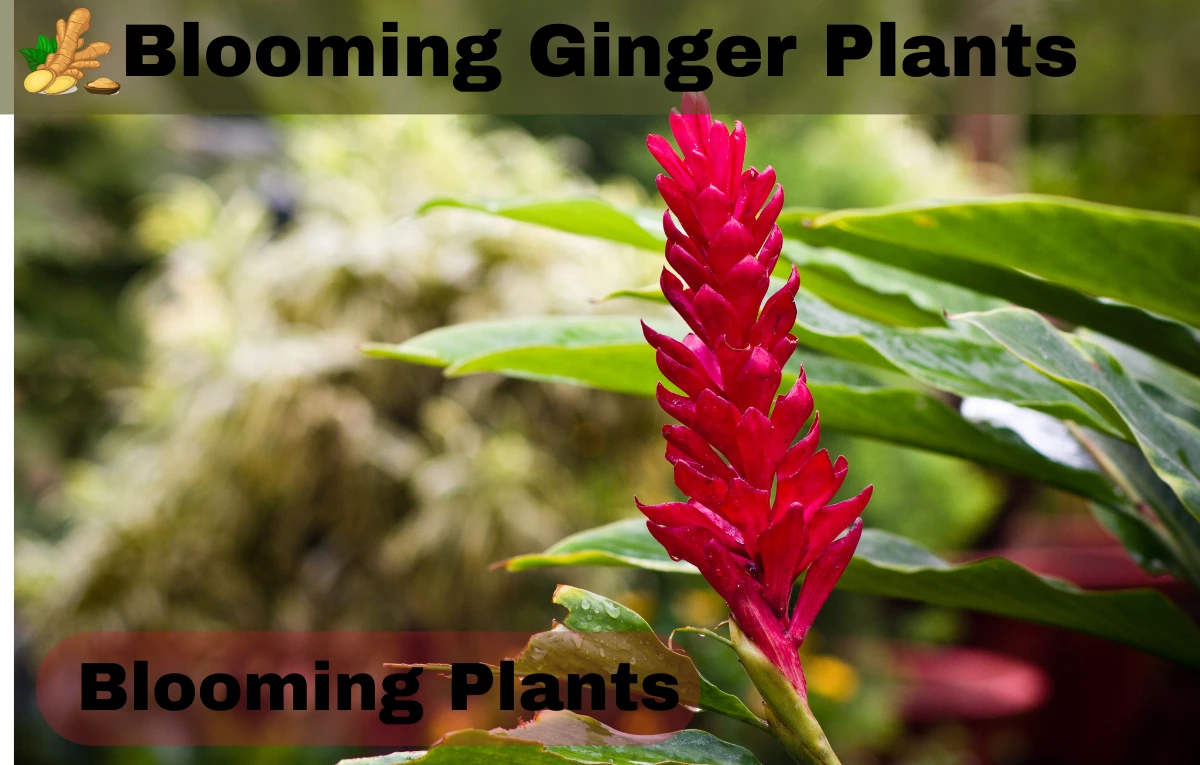Ginger plants are not just for culinary purposes; many varieties also produce stunning blooms that can transform your garden into an exotic paradise. This guide dives deep into the world of blooming ginger plants, offering insights into their care, varieties, and creative uses.
Understanding Ginger Plants with Blooms
What Are Blooming Ginger Plants?
Blooming ginger plants belong to the Zingiberaceae family, known for their aromatic rhizomes and striking flowers. These plants thrive in tropical and subtropical climates, producing vibrant, showy blooms that range from reds and oranges to yellows and whites. Popular varieties include torch ginger (Etlingera elatior), butterfly ginger (Hedychium coronarium), and spiral ginger (Costus speciosus).
Natural Habitat and Growth Conditions
Native to Asia, blooming ginger plants prefer warm, humid environments with well-draining soil. They grow in forests and shaded areas, making them ideal for partially shaded gardens. Providing conditions that mimic their natural habitat ensures healthy growth and vibrant blooms.
Benefits of Growing Ginger Plants with Blooms
In addition to their aesthetic appeal, blooming ginger plants attract pollinators like bees and butterflies. Some varieties also have medicinal properties, while others are used in floral arrangements due to their long-lasting blooms.
Popular Varieties of Blooming Ginger Plants
Torch Ginger: A Bold Statement
Torch ginger, with its large, waxy flowers in shades of red, pink, or orange, makes a dramatic focal point in any garden. These plants can reach heights of up to 15 feet, creating a tropical ambiance. Their blooms are often used in culinary dishes in Southeast Asia.
Butterfly Ginger: Fragrant and Elegant
Butterfly ginger produces white, butterfly-like flowers with a sweet fragrance. This variety thrives in moist, shaded areas and is perfect for gardens with limited sunlight. Its blooms are not only beautiful but also edible, adding a unique touch to salads and desserts.
Spiral Ginger: Unique and Versatile
Spiral ginger gets its name from the spiral arrangement of its leaves. Its flowers emerge from cone-like structures, adding texture and interest to gardens. This variety is low-maintenance and can adapt to both garden beds and containers.
How to Plant and Care for Blooming Ginger Plants
Preparing the Soil for Ginger Plants
Ginger plants thrive in rich, well-draining soil with a slightly acidic to neutral pH (6.0-7.0). Adding organic matter like compost or aged manure improves soil fertility and drainage. Avoid waterlogged conditions, as they can lead to root rot.
Planting Techniques for Ginger Rhizomes
To plant ginger, bury the rhizomes 2-4 inches deep with the buds facing upward. Space them 12-18 inches apart to allow for proper air circulation. Water thoroughly after planting and keep the soil consistently moist but not soggy.
Maintaining Blooming Ginger Plants
Ginger plants require regular watering, especially during dry periods. Fertilize every 4-6 weeks with a balanced fertilizer to promote healthy growth and blooms. Prune dead or damaged leaves to maintain a tidy appearance.
Common Challenges in Growing Blooming Ginger Plants
Pests and Diseases
Blooming ginger plants are susceptible to pests like aphids, spider mites, and nematodes. Use insecticidal soap or neem oil to manage infestations. Diseases like leaf spot and root rot can be prevented by ensuring proper drainage and avoiding overcrowding.
Managing Growth in Cooler Climates
Ginger plants are sensitive to frost and cold temperatures. In cooler climates, grow them in containers and move them indoors during winter. Use mulch to insulate the soil and protect the rhizomes.
Encouraging Blooms
To encourage blooming, provide adequate sunlight (partial to full shade) and maintain consistent moisture levels. Avoid over-fertilizing with nitrogen-heavy products, as this can promote foliage growth at the expense of flowers.
Creative Uses for Blooming Ginger Plants
Landscaping with Ginger Plants
Blooming ginger plants add a tropical touch to gardens, especially when used as borders, focal points, or underplantings. Their vibrant colors and unique shapes create visual interest and depth.
Culinary and Medicinal Applications
Some ginger varieties, like torch ginger, have edible flowers and stems that are used in Asian cuisine. Additionally, ginger rhizomes have well-documented medicinal properties, including anti-inflammatory and digestive benefits.
Floral Arrangements and Decor
The long-lasting blooms of ginger plants make them ideal for cut flower arrangements. Use them to create stunning centerpieces or add an exotic flair to home decor.
Sustainable Practices for Growing Ginger Plants
Water Conservation Techniques
Ginger plants require consistent moisture but can be grown sustainably by using drip irrigation systems. Mulching helps retain soil moisture and reduces the need for frequent watering.
Organic Pest Control Methods
Avoid chemical pesticides by using natural solutions like neem oil, diatomaceous earth, or companion planting with pest-repelling herbs like basil and marigold.
Promoting Biodiversity
Growing ginger plants alongside native species supports local ecosystems and attracts beneficial insects. This practice enhances pollination and reduces the need for chemical inputs.
Conclusion
Blooming ginger plants offer a unique blend of beauty, versatility, and functionality. From their vibrant flowers to their culinary and medicinal uses, these plants are a valuable addition to any garden. By understanding their needs and incorporating sustainable practices, you can enjoy their stunning blooms year after year.

